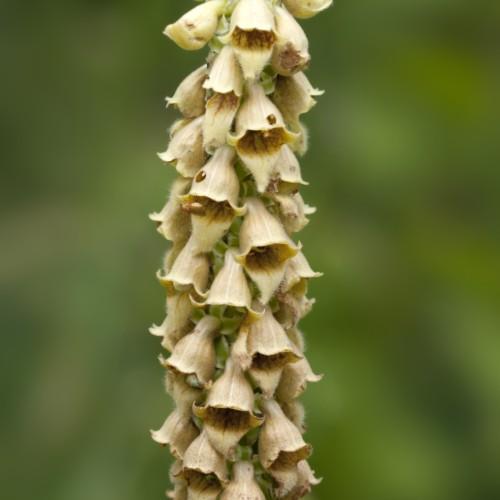
rusty foxglove
Digitalis ferruginea 'Gelber Herold'
Cycle:
Herbaceous Perennial
Watering:
Average
Hardiness Zone:
4 - 8
Flowers:
Flowers
Sun:
Part shade
Leaf:
Yes
Growth Rate:
Low
Maintenance:
Low
Poisonous To Humans:
Yes
Poisonous To Pets:
Yes
Drought Tolerant:
Yes
watering
Rusty Foxglove should be kept evenly moist during the growing season (typically April-October). Water when the top inch of soil feels dry to the touch. Make sure to avoid over-watering; during hot weather, plants may need water every 4 to 5 days, and during cooler weather, once a week is adequate. Reduce watering frequency to once every 2 weeks in mid-autumn. Once it becomes dormant in winter, you can reduce watering to once a month or so.
sunlight
Rusty foxglove prefers at least 4 to 6 hours of direct sunlight each day. It’s best to provide this sunlight throughout the day, ideally morning through mid-afternoon. In regions with intense heat, some light afternoon shade is beneficial.
pruning
Rusty foxglove (Digitalis ferruginea 'Gelber Herold') is a beautiful and hardy flower that can be found in many gardens. Pruning is necessary for its proper growth and flowering potential. Pruning should occur in the late fall or early spring, as the plant is prone to frost damage. To prepare for pruning, remove any dead or diseased stems and cut back the dying foliage to ensure healthy growth for the following year. When pruning rusty foxglove, the goal is to keep the plant at a manageable height while preserving its natural shape. To do this, begin pruning by removing any dead or congested shoots, followed by the top third of each stem to promote healthy growth and flowering potential. Be sure to trim the stems back to just above the leaf nodes, as these are where new leaves and flowers will come from. Take care not to cut further into the stem than necessary, as it may cause permanent damage. Trimming and thinning of the foliage can also help promote airflow and light penetration, which is essential for strong healthy growth. After pruning, be sure to remove any excess material from the garden. To ensure the best results, it's important to carry out pruning of rusty foxglove consistently each year. Regularly pruning will keep the plant healthy and manageable, as well as help promote strong flowering potential in the following season.
